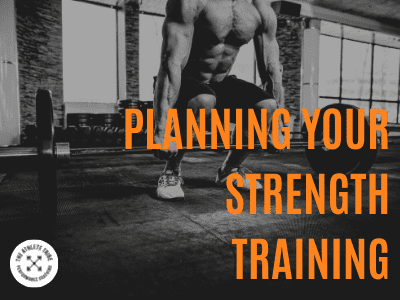How To Plan Your Strength Training In Rugby
Planning your training is vital, especially in rugby, where power and strength are crucial for successful performance. In sports science, planning of training is known as periodisation.
Periodisation is defined as
“the deliberate manipulation of training variables to optimise performance for sports, preventing overtraining, and improving performance.”
At The Athlete Tribe, the thing we hear all the time is ‘I want to be more powerful’. But what people sometimes fail to understand is that the greater maximal strength you have, the higher your potential is to create power. Power is the rate at which you can create force. The ability to do this is essential in rugby performance due to the nature of the tasks required in the sport, such as jumping, sprinting, rucking, tackling and agility.
Training for power requires the organisation of training into specific phases. This is where the science of training steps in to help us.
Everything that we do in life has a process, from walking, cleaning our teeth or cooking. Developing power is no different. We need to concentrate on blocks of training where there is a focus to that training. Too often, we see people not having a training focus or goal and therefore ending up doing what they like, not what they need to do.
There are five main training blocks in a rugby season. The duration of each block depends on the level. For example, in professional rugby, an offseason block might be four to five weeks, but at the amateur level, this could be up to 12 weeks.
Five main strength training blocks in a rugby season
- Transitional Phase (Off-Season)
- General Preparation Phase (Pre Season – Block 1)
- Sports Specific Phase 1 (Pre Season – Block 2)
- Sports Specific Phase 2 (Pre Season – Block 3)
- Competition Phase (In Season)
Off-Season – Transitional Phase
This phase is sometimes known as the transitional phase; it’s the period from the last game of the season to the first session in the pre-season. It’s a massive opportunity for physical development as there is no rugby. Therefore, your energy can go into the areas you need to improve. It is also the time to get any injuries addressed and treated.
We strongly encourage the people we work with to play other sports to change things up, reduce the monotony of playing the same sport, and develop transferable skills.
During this phase, there should be an emphasis on injury prevention for the upcoming season. It is also an excellent opportunity to address movement or mobility issues. Depending on the players’ needs and wants, the number of sessions per week might differ from 2-4. Each session should include lots of different exercises to develop overall movement. An emphasis might be placed on hypertrophy due to the decrease in energy demand; players find it easy to gain weight during this period.
A good starting point is 20-25 sets per session, with a rep range of 8-20 reps per set. If you want more information, drop us an email here. We try to encourage players to stay away from using barbells to give the body a rest from such movements.
Pre-season Block 1 – General Preparation Phase
Over the last eight years of coaching in both professional and amateur rugby, there has always been a clear idea of three blocks in the pre-season. Pre-season can last between 8-12 weeks; this is a long time to kee training with intensity and focus.
The first block should be a mixture of strength training and hypertrophy work. The aim is to increase muscle mass in order to be successful and prevent injuries. Also, increasing the size of the muscle allows for the development of increased strength. Unlike in the off-season, there will be a move back towards compound movements such as Bench, Squat and Deadlift, with some Olympic based work in preparation for the next block as these movements require practice and repetitions.
During this period, the volume and intensity should be greater than during the Transitional Phase, with sets and reps ranging from 3-4 sets per exercise of 5-12 Reps. The cycle should last between 4 and 6 weeks, and the players should lift 3-5 times per week. As the rugby intensity increases, this is the time to make sure that you monitor your recovery. Check out our resource on heart variability and how to improve it here.
During this period, you will normally have to complete the Bronco Fitness Test, check out our resource here on how to improve it.
Pre-season Block 2 – Sports Specific Phase 1
As mentioned, typically, there is a deload week in the pre-season to allow the body and mind to recover and prepare for the next block. As we discussed at the start, rugby is a strength game, and the ability to produce the most force against an external resistance will influence the success of the player.
Rugby involves creating a force against another body and then into the ground to change direction and sprint. The most commonly used way to develop strength is using compound multi-joint movements such as bench, squats, deadlifts, and several other exercises such as chins, rows, and presses. During this time period, the use of strongman-type work has grown in popularity, and we have seen benefits across all levels of the game. It’s important to note that these exercises are very technical, and therefore, loading needs to be taken into consideration.
During this phase, the volume and intensity should range from 3-6 sets of 2-6 reps at 80-95% 1RM. Due to the fatigue and neural stress associated with heavy lifting, rest periods should be 2-4 mins in length. The strength cycle should last 4-6 weeks, dependent on the adaptation to the training.
Pre-season Block 3 – Sports Specific Phase 2
This phase can sometimes be thought of as the realisation phase. You have developed strength and hypertrophy over the last 16 weeks or so, and now is the time to convert it into power and therefore gains in rugby performance. The difference between strength and power is the time that it takes to create that force. The faster you can make that force, the more powerful you are.
During this period in the training cycle, volume is low too (3-4 sets of 2-6 reps), but intensity and effort should be near maximal.
For your strength training lifted loads will be from around 30-75% 1RM; this range will depend on position – backs more towards 30% and forwards more towards 75%. The idea or intent behind the reps is to lift the bar or weight as fast as possible.
In the gym, we will start to see some differences in people’s positions and what is required during a game. However, the most force produced is horizontally distributed, and therefore, training should focus on these characteristics.
In Season – Competition Phase
Among the many thought processes during the season, an important one is maintaining the work done in the offseason and pre-season. If you don’t, you will be in a constant cycle of improvement and then detraining.
So due to the length of the season, you must continue to develop strength training and power training. It would be best if you built your gym work around team training and rugby games. It’s important to understand that strength and conditioning is supporting your rugby. Too many times, I have seen players get fixed on the gym and then end up too exhausted to get the benefits out of team training or their matches.
The ideal is to do two-three sessions per week of high-quality work in the gym. A session would include 3-5 sets of 2-6 reps at 80-95% 1RM per main lift, and then 2-sets of accessory exercises.
Rugby players at all levels must endure tremendous amounts of physical contact or force and, therefore, must be able to resist and overcome these forces to succeed and stay injury-free.
This is why all players need to possess an adequate level of strength and power. The Athlete Tribe has the knowledge and experience to help rugby athletes.
If you are interested in have a training programme that can support your rugby development, drop us a message here.
Lee
Director and Founder


